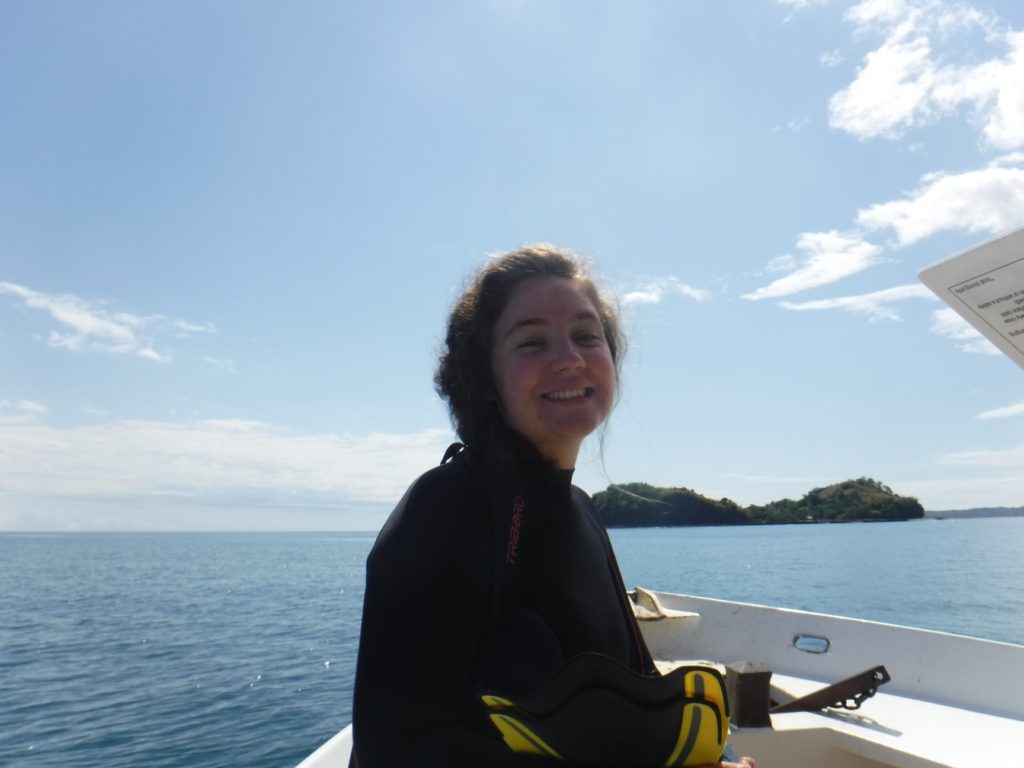
| Academic Year | 2019-2020 |
| nesmonde01@qub.ac.uk | |
| Institution | Queen's University, Belfast |
Biography
School: School of Biological Sciences
Project: Quantifying the role of oceanic storminess in determining the survival and recruitment of long-distance, oversea, migratory birds
Supervisors: Dr Neil Reid and Professor Paul Thompson
Undergraduate Education: BSc Zoology, University of Glasgow
Postgraduate Education: MSc Biodiversity and Conservation, Trinity College Dublin
Research: Fieldwork has been on-going since the 1950s for the three migratory bird species I am studying. A colony of Manx shearwaters on Lighthouse Island, an island belonging to the Copeland Islands in Northern Ireland, have been ringing shearwaters and recording the recaptures since 1953. Similarly, on Eynhallow in the Orkney Islands northern fulmar populations have been monitored using mark-recapture ringing and barnacle geese overwintering on the west coast of Co. Mayo, Ireland, have been studied for population dynamics and timing of migration.
I work on Manx shearwaters (Puffinus puffinus) (Lighthouse Island, Copelands, Northern Ireland, UK), which circumnavigate the Atlantic Ocean flying 10,000 km to overwinter in the Argentinean coast and breed in Britain and Ireland; Northern fulmars (Fulmarus glacialis) (Eynhallow, Orkney Islands, Scotland, UK), which overwinter along the Mid-Atlantic Ridge 3,000 km from their breeding grounds in Scotland; and Barnacle geese (Branta leucopsis) (overwintering grounds on Inishkea Island, Co. Mayo, Ireland), which breed in Arctic Greenland and overwinter in Ireland over a distance of 2,000 km.
Methods: Capture-mark-recapture method from historical ringing recovery data which contain 100,000s ringing records for the three bird species to analyse population dynamics and survival. Storm energy data will be derived from remotely-sensed satellite data and ocean buoys which will measure the strength and speed of ocean waves and wind, sea surface temperature and chlorophyll levels. This data is freely available from a variety of sources including the historical global international ACRE (Atmospheric Circulation Reconstructions over the Earth) initiative with the Met Office, Met Eireann (Irish Met Service) and the NOAA Storm events database for storms occurring on the east coasts of north, central and south America.
Relevant Articles:
- Guilford, T., Meade, J., Willis, J., Phillips, R.A., Boyle, D., Roberts, S., Collett, M., Freeman, R. and Perrins, C.M., 2009. Migration and stopover in a small pelagic seabird, the Manx shearwater Puffinus puffinus: insights from machine learning. Proceedings of the Royal Society B: Biological Sciences, 276(1660), pp.1215-1223.
- Butler, R.W., 2000. Stormy seas for some North American songbirds: Are declines related to severe storms during migration?. The Auk, 117(2), pp.518-522.
- Nicoll, M.A., Nevoux, M., Jones, C.G., Ratcliffe, N., Ruhomaun, K., Tatayah, V. and Norris, K., 2017. Contrasting effects of tropical cyclones on the annual survival of a pelagic seabird in the Indian Ocean. Global change biology, 23(2), pp.550-565.
- Tombre, I.M., Oudman, T., Shimmings, P., Griffin, L. and Prop, J., 2019. Northward range expansion in spring‐staging barnacle geese is a response to climate change and population growth, mediated by individual experience. Global change biology.
- Cordes, L.S., Hedworth, H.E., Cabot, D., Cassidy, M. and Thompson, P.M., 2015. Parallel declines in survival of adult Northern Fulmars Fulmarus glacialis at colonies in Scotland and Ireland. Ibis, 157(3), pp.631-636.





















































